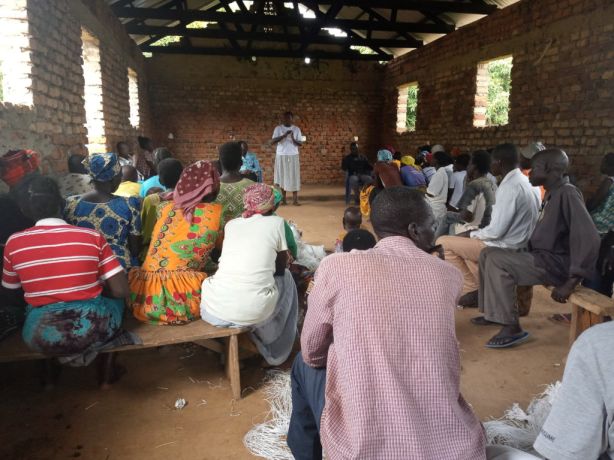Table of Contents
ToggleINTRODUCTION TO REPRODUCTIVE HEALTH
Reproductive Health is an integral aspect of health care, included in the minimal health care package. The knowledge, skills, and attitude gained from this course will help students manage and counsel clients with health problems related to reproductive health.
Reproductive Health is when a person is well, not only physically but also mentally and socially, in all matters related to the reproductive system and how it functions.
Reproductive health is defined as a state of complete physical, mental and social well being and not merely the absence of the disease or infirmity on all matters related to reproductive function and its processes involved.
This is a process concerned with peoples‘ ability to have a responsible, satisfying and safe sex life, their capability to reproduce and having the freedom to decide if, when and how often to do so.
Reproductive health includes having:
- Satisfying, safe sex life.
- Ability to reproduce.
- Successful maternal and infant survival outcome.
- Freedom to control reproduction.
- Information about and access to safer, effective and affordable methods of family planning.
- Ability to minimize gynecological disease throughout life.

COMPONENTS OF REPRODUCTIVE HEALTH
Safe Motherhood:
- Preconception care
- Antenatal care
- Maternal nutrition
- Focused antenatal care
- Immunization for tetanus, hepatitis B, etc.
- EMTCT of HIV/AIDS
- Clean safe delivery
- Emergency obstetric care
- Postnatal (newborn care) and postpartum care
- Breastfeeding/infant feeding
- IEC and community mobilization
- Post-abortion care services
- Comprehensive abortion care
Family Planning:
- Medical eligibility for family planning services
- Provision of contraceptives and natural family planning
- Emergency contraceptive
- Management and follow-up for side effects of contraceptives
- Infection prevention and quality care
- Adolescent reproductive health
STIs/HIV/AIDS:
- Behavioral change counseling
- Condom promotion and distribution
- Counseling and testing
- STI management and treatment
- Infection prevention and quality of care
- Partner notification and treatment
- Treatment compliance
- Sexually Transmitted Infection, including HIV and AIDS
- EMTCT
Sexual and Adolescent Health:
- Behavior change counseling
- Provision of adolescent-friendly services
- Provision of contraceptive services
- Screening and management of STIs
- Sexual and Gender-Based Violence
Maternal and Child Health (MCH) (Safe Motherhood):
- Preconception care
- Antenatal care
- Maternal nutrition
- Focused antenatal care
- Immunization for tetanus, hepatitis B, etc.
- EMTCT of HIV/AIDS
- Clean safe delivery
- Emergency obstetric care
- Postnatal (newborn care) and postpartum care
- Breastfeeding/infant feeding
- IEC and community mobilization
- Post-abortion care services
- Comprehensive abortion care
Reproductive Organ Cancers:
- Screening and referral
- Definitive management
- Palliative care
Gender-Related Issues:
- Advocacy
- Partner involvement
- Community involvement
- Specialized management
- Multi-sectorial collaboration
- Legal support
Menopause and Andropause:
- Symptomatic treatment
- Hormonal replacement
- Partner involvement
- Advice on exercise and nutrition
Problems affecting women’s reproductive health/common RH concerns for women.
- Anaemia
- Unregulated fertility
- Malnutrition
- Infertility
- STIs, HIV, and AIDS
- Uterine fibroids
- Maternal mortality and morbidity
- Endometriosis
- Poverty
- Female Genital Mutilation
- Gynaecological cancers
- Sexual gender-based violence
- Early marriage
- Unintended pregnancy
Importance of reproductive health
- Promotion of maternal and child health
- Reduces maternal morbidity and mortality
- Promotes free women‘s involvement in all matters related to reproductive health issues e.g. family planning
- Promotes prompt treatment and detection of life threatening cases throughout reproductive life
- It promotes safer sex practices and reduces the incidence of rampant sexual related abuses
- Reduces government expenditure on reproductive related health issues thus promotes quality standard of living.
Problems being faced during the implementation of Reproductive Health in Uganda
The following are some of the problems being encountered during the implementation of reproductive health services in Uganda;
- Low socio-economic status (poverty): This is the major setback as many people in Uganda live within poverty level which in turn makes them unable to access even the least costly services. For instance, the Uganda Demographic Health Survey shows that mortality rates are high in women from low socio-economic status as these women are likely to be less privileged in the fields of nutrition, housing, quality education etc
- Improper/underutilization of the existing services: This can be attributed to several factors that lead to the improper or inadequate use of the existing services. These factors include: Lack of Awareness and Education, Stigma and Cultural Barriers, Limited Access to Services, Cost and Affordability, e.t.c
- Delivery of substandard care i.e. when the care provided is below the generally accepted level available at that particular coupled up shortages of resources and under-equipped facilities
- Lack of communication and referral facilities: This could be due to poor coordination between lower health facilities with the higher ones backed-up by geographical barriers, transport means like ambulances etc.
- Poor cultural perspectives on reproductive health; variety of cultural practices are the basic obstacles to Reproductive Health Services for instance, female genital mutilation, early marriages, denying women to eat certain foods etc.
- Lack of awareness by the community on issues related to reproductive health.
- Inadequate supply of resources related to reproductive health. This therefore makes the little existing services disproportionately consumed by the overwhelming individuals who visit the health Centers.
- Inadequate skilled staff specially trained on issues pertaining reproductive health. The number of skilled staff to deliver various Reproductive Health Services in Uganda is appalling as compared to the number of clients who desperately need the scarce services.
- Improper evaluation and supervision of reproductive health services to ascertain its progress and successes .
- Lack of support from men, opinion leaders and development partners as they are considered change agents in the community
- Misappropriation and embezzlement of funds specially designed to facilitate reproductive health services.

Ways through which Reproductive Health Services can be improved in Uganda.
It is a coordinated long term effort within the families, opinion leaders, communities, and health systems.
It also involves the national legislation and policies where action may vary in respect of an individual, and the government ought to make Reproductive Health a priority of public concern and to periodically evaluate the program to ascertain the successes.
1. Quality Obstetric and Referral Services: Upgrade facilities, ensure ongoing training for healthcare providers.
2. Decentralization of Services: Establish satellite clinics in underserved areas. Work with local governments to set up and manage decentralized clinics, ensuring accessibility for rural populations.
3. Empowerment and Education: Promote women’s education and economic opportunities. Collaborate with educational institutions, NGOs, and businesses to create scholarship programs and vocational training.
4. Community Sensitization: Conduct community workshops, health talks, and media campaigns. Engage local influencers, utilize community radio, and distribute informational materials.
5. Improving Standard Delivery of Care: Organize regular refresher courses for healthcare personnel. Establish a training calendar, facilitate workshops, and provide resources for continuous learning.
6. Proper Utilization of Services: Develop outreach programs and streamline service information. Engage community health workers for door-to-door awareness, and utilize digital platforms for service updates.
7. Discouraging Cultural Practices: Advocate for and enforce legislation against harmful practices. Collaborate with legal authorities, NGOs, and community leaders to raise awareness and enforce laws.
8. Penalization for Misuse of Funds: Institute transparent financial monitoring systems. Regular audits, community involvement in financial oversight, and legal consequences for mismanagement.
9. Male and Community Engagement: Establish community support groups, involve men in awareness campaigns. Conduct community meetings, involve male leaders in reproductive health initiatives, and celebrate positive male involvement.


Short and precised notes
Thank you for the beautiful notes
I love them
The notes are interesting
Very nice notes,,,I like the platform
Good write up
When I met such beautiful notes, I stopped looking for other sources! Thanks indeed
Very good notes
well summarized notes
thanks br